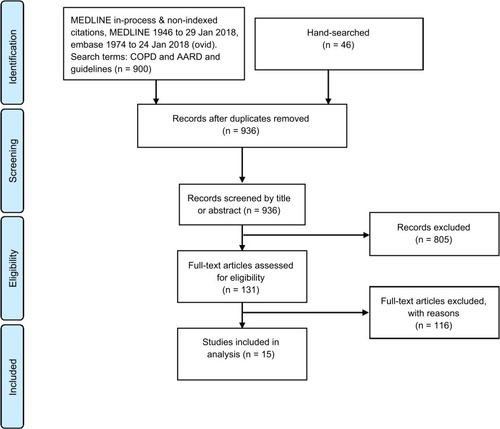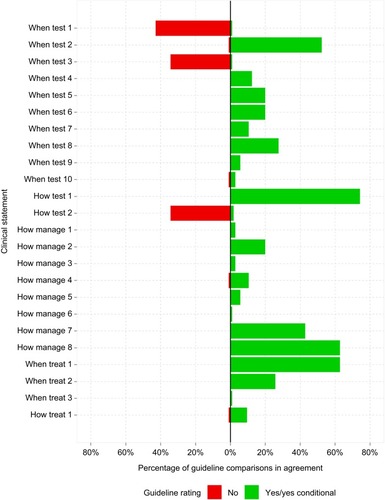Figures & data
Table 1 Alpha-1 antitrypsin deficiency (AATD) guidelines analyzed in this study
Table 2 Individual clinical statements and adjudicated guideline ratings
Table 3 Four rating categories applied to each of the 24 clinical statements for each guideline
Table 4 Parameters for quantifying guideline agreement
Table 5 Number of matching guideline comparisons (“overall guideline agreement percentage”)
Figure 1 PRISMA flow diagram. Medline and Embase were searched using search terms “alpha-1 antitrypsin deficiency,” “COPD,” and “guidelines.” Eligible guidelines were published in English and were issued by official respiratory organizations/medical societies and/or by national organizations.

Table 6 Overall guideline agreement percentage and by rating bundle (ie, when to test, etc.)
Figure 2 Affirmative agreement among guidelines on individual clinical statements. For each clinical statement, the affirmative proportions of guideline comparisons endorsing an action (with or without an added condition, Y + YC) are plotted. Negative agreements are also plotted. The highest affirmative agreement percentage was for the statement: “Initial testing should include a serum AAT level” (74%). The highest negative agreement percentage was for the statement: “Only patients with suggestive features of AAT deficiency should be tested” (43%).

Table 7 Agreement percentage among guidelines stratified by time periods: 2013–2017, 2008–2012, and 2007 and earlier
